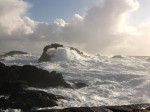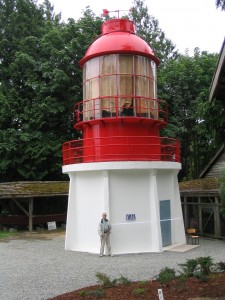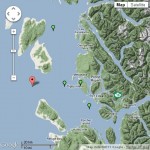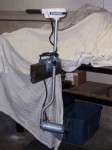Here is another story from Ms. Juanita (Swanson) DuLong. She was a young girl on most of these stations, but living there, and hearing stories from her parents, she has created lighthouse memories from the 1950s time. Her older stories are found here and here.
Her husband Roy scanned some nice photos of Pine Island station, but unfortunately they are way too small to show here. When he has time to make larger ones, I will add them.
Roy sent some more scans, but they are limited, but I have posted them because they show details not available before – e.g. the A-frame highline setup.
*************************
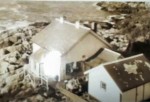
There may be somewhere in the world a place foggier than Pine Island lighthouse, but it’s hard to believe. The horn was often on for days on end, and became only another background noise. A lighthouse tender could arrive in clear weather, and radio that Pine was under a doughnut of fog. Continue reading Life on Pine Island c. 1950s


